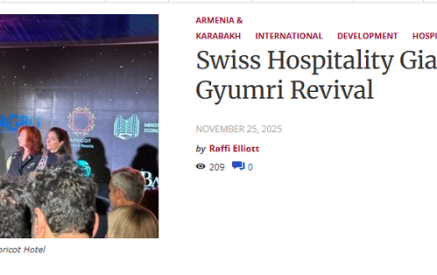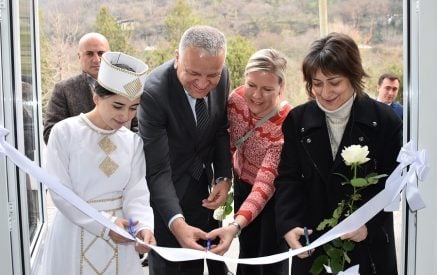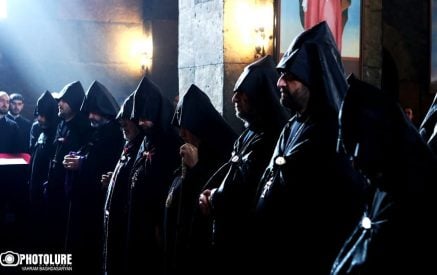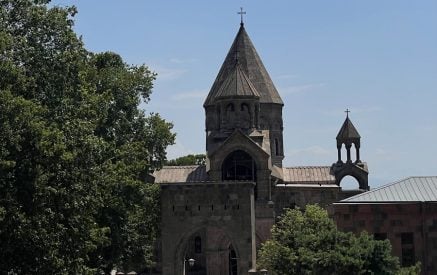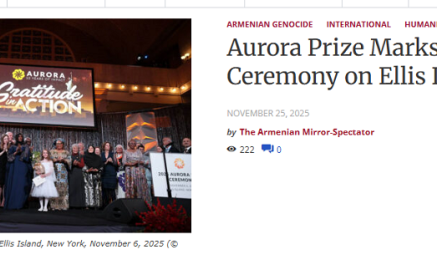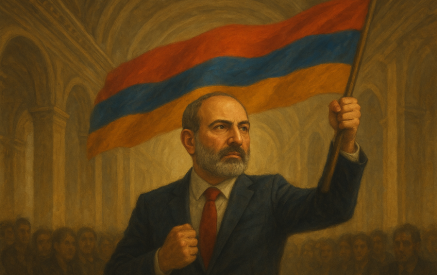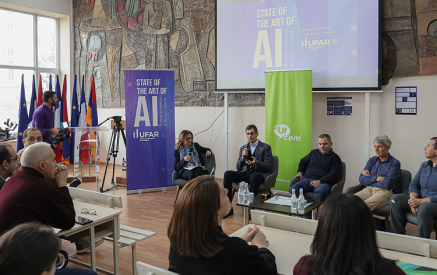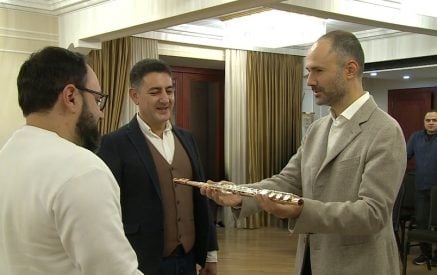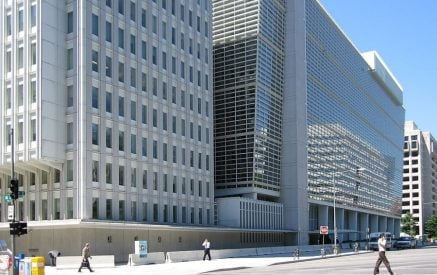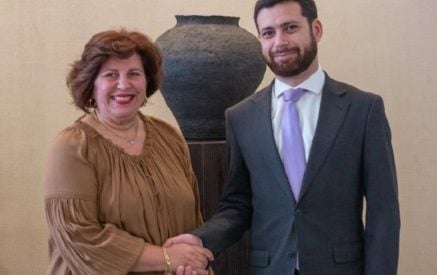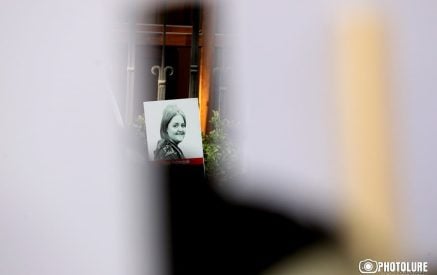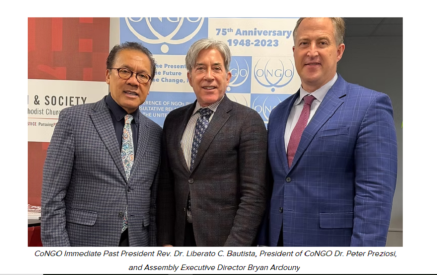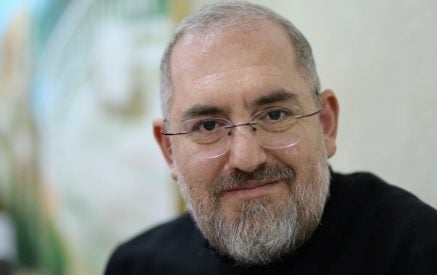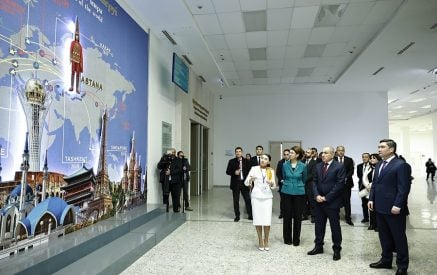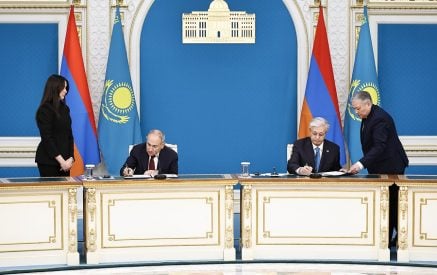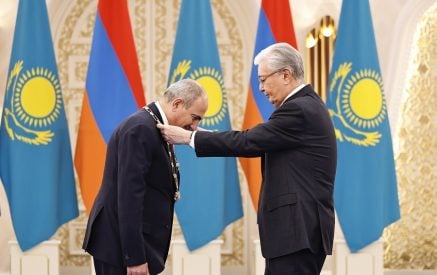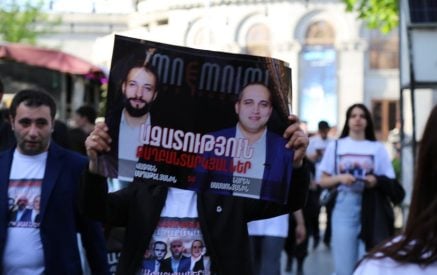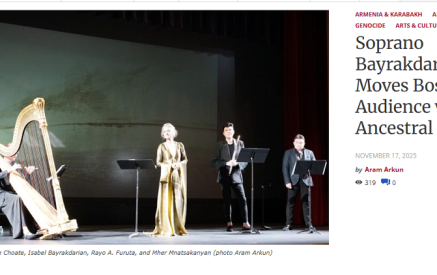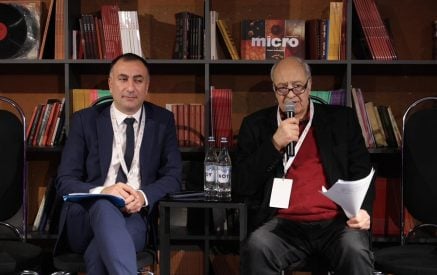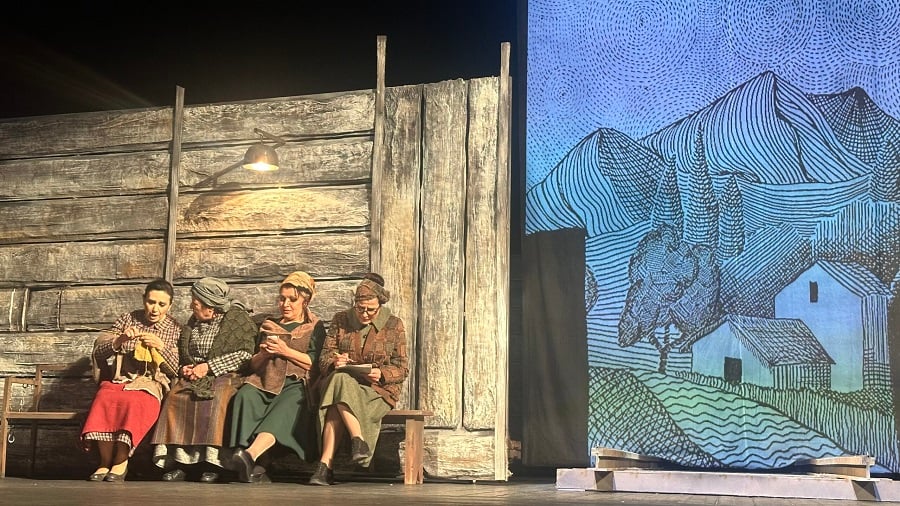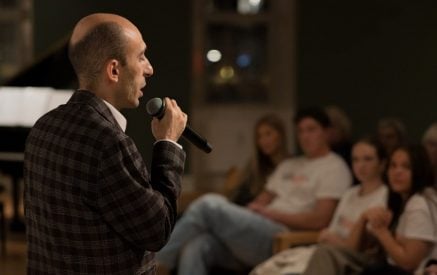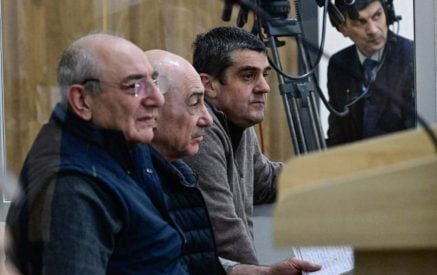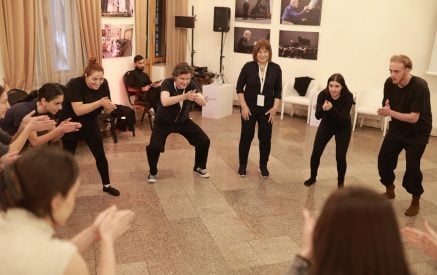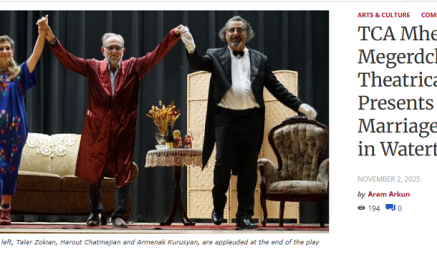YEREVAN—On January 30 and 31, 2025, the Hakob Paronyan State Musical Comedy Theater hosted the premiere of People of the Sun, a moving adaptation of the works of Artsakh writer Hermine Avagyan.
This production, based on Avagyan’s book, I Am Running, Wait for Me, features works written before the 2020 war and portrays life in one of Artsakh’s picturesque villages. Through her writing, Avagyan sought to emphasize the universal humanity of the Artsakh people. Like anyone else, they had dreams, aspirations and a profound connection to their land. They built homes, nurtured families and longed to live on the soil that was rightfully theirs.
“These people have suffered losses. Fate has been cruel to them. But they do not lose their strength or sense of humor. They have their shortcomings, too, but they possess a strong will to live,” Avagyan explained in an interview with the Weekly.
Read also
She underscored one of the core messages of her work: “Land remains land only when it is lived on. One must live on their land and should not leave it or sever ties with it.” Tragically, the people of Artsakh could never have imagined that this dream — their connection to their homeland — would one day be taken away from them.
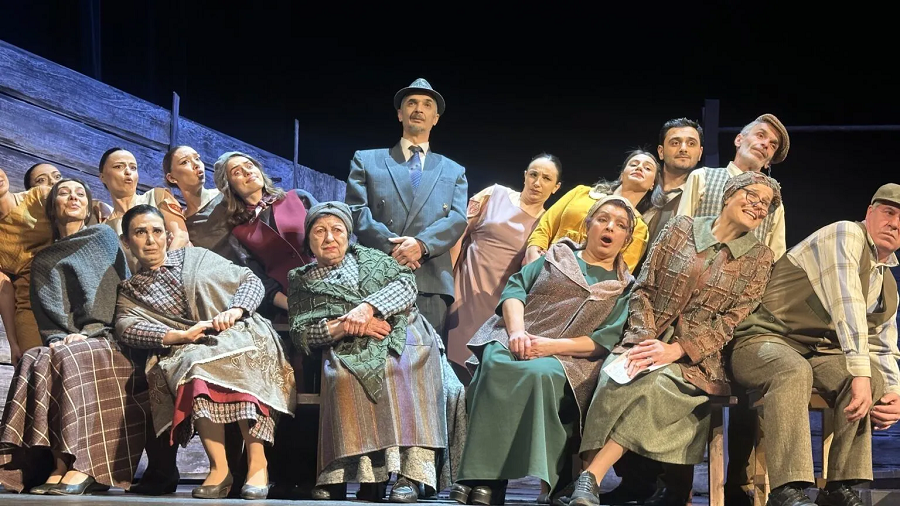
After the first war, cameras were a rarity in Artsakh, making annual visits from diasporans more significant as they photographed the villagers. The author captures this memory through the performance.
During the performance, the audience experienced the vibrant essence of communal life in Artsakh — characterized by the wit and simplicity of its people and their unwavering hard work and resilience. Today’s forcibly displaced Armenians, scattered across Armenia and various parts of the world after the ethnic cleansing of Artsakh by Azerbaijan, recall this spirit as they try to adapt to new realities.
The decision to title the play People of the Sun holds profound symbolism for Avagyan. The sun represents life, light and eternity, embodying the enduring spirit that Armenians from Artsakh carry within them.
At the outset of the performance, Hakob Ghazanchyan, the stage director of the Hakob Paronyan State Musical Comedy Theater, emphasized the importance of staging a work centered on Artsakh. “We must preserve the memories and feelings about Artsakh, which have been temporarily taken from us,” he stated. The theater’s decision to entrust this significant production to director Rouzan Khachatryan — former director of the Vahram Papazyan Dramatic Theater in Stepanakert — underscored its commitment to honoring Artsakh’s cultural heritage through art.
Khachatryan portrayed the universality of the human experience with her direction. “We did not aim to distinguish Artsakh. Our compatriots living there are just like those in other parts of Armenia. This performance could represent any village in Armenia,” she told the Weekly. The play portrays a collective identity rather than a divided one, she says.
“This performance is about people who have experienced war but continue to live and create,” Khachatryan continued. She also sought to challenge existing stereotypes about Artsakh Armenians within Armenian society — whether overly romanticized or unfairly demonized. “As a director, I wanted to break those stereotypes. An Artsakh resident is an ordinary person, with their own simple nature and flaws, just like Armenians from other regions of Armenia,” she said.
Another key aspect of the production was the collaboration between the Hakob Paronyan State Musical Comedy Theater and Artsakh’s artistic community. The theater’s management invited actors from the Stepanakert Dramatic Theater to perform alongside Paronyan Theater’s leading actors. This collaboration is significant, as Artsakh’s material and intangible cultural heritage is under threat.
Today, many artistic groups from Artsakh are no longer functioning in Armenia, including the Stepanakert Dramatic Theater, which has a nearly century-long history but has been inactive since the loss of Artsakh. Even during Azerbaijan’s blockade of Artsakh, the theater staged performances despite numerous challenges. Its last performance in Stepanakert took place on August 30 — just weeks before the forced displacement of Artsakh’s people.
Although only two actors from Artsakh participated in People of the Sun, the director affirmed that they were able to convey the warmth and spirit of Artsakh alongside their Yerevan colleagues.
One of the performers, storyteller Shogher Sargsyan, is an actor from the Stepanakert Dramatic Theater. She played the part of Astghik, who serves as the narrator. The entire performance unfolds through Astghik’s memories of her native village and its residents. “Astghik is a collective character for me. I have tried to encapsulate both the author and director’s personal traits, feelings and relationships within her. Astghik represents all Artsakh residents who, being far from their roots, feel a need and obligation to share their most cherished memories,” Sargsyan told the Weekly.
She added, “When telling stories about Artsakh, I want to first speak about my home, my people and the peace and love that exist in our hearts.”
For Sargsyan, this performance was inspiring and emotional, as it marked her first time performing on the Paronyan stage after previously performing there with Stepanakert’s Dramatic Theater in An Apple Fell from the Sky. However, what moved her most was the opportunity to speak about Artsakh. “I felt that every person present in the audience empathized with me. Their memories merged with mine, and we became each other’s warming suns,” she shared.
The importance of these memories extends beyond just war, loss and pain. They also include light, love, warmth, vibrant colors and laughter. It is essential to hold onto these memories, until the day they can return to the land of the sun — Artsakh — where the creators and actors hope to one day perform this play.
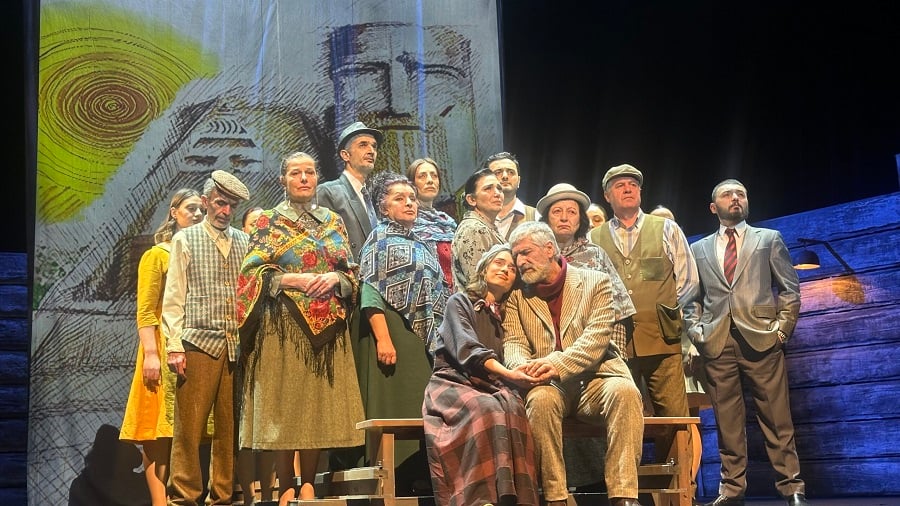
In the final scene, the Artsakhian Horovel (a traditional work song) is performed in the Artsakh dialect. This song, also known as a gutanerg, reflects the spirit of the ‘People of the Sun,’ sung during agricultural work to encourage laborers and express personal emotions and social struggles.
One character expresses this sentiment beautifully: “The path of longing passes through our hearts, and it doesn’t matter where in the world we are. Wherever we are, we will carry our hearts with us, and the pleasant whispers of memories will resonate in our ears, giving birth to recollections that will slightly, insignificantly change and sweeten the taste in our mouths, preserving small grains of sweetness amid the bitterness of life.”


